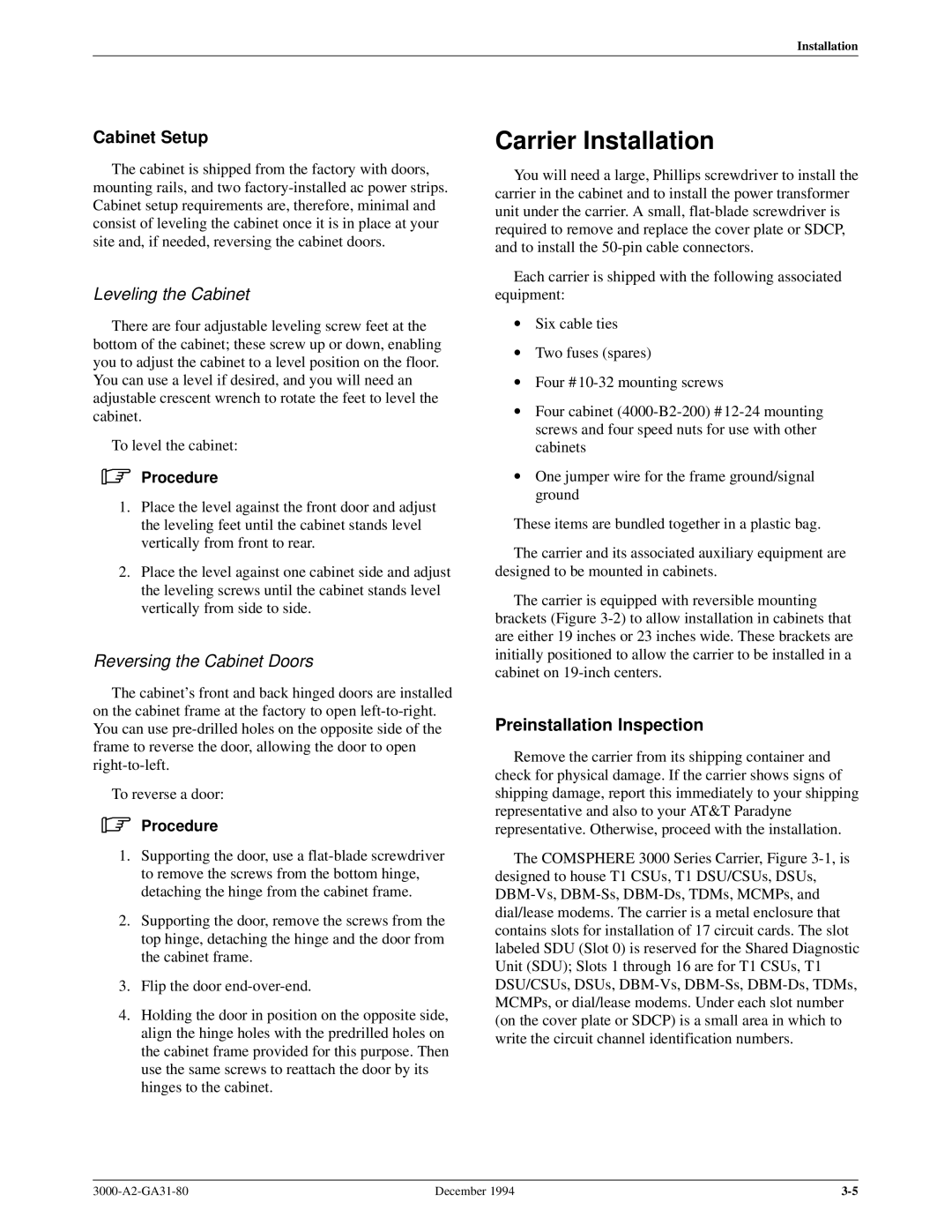
Installation
Cabinet Setup
The cabinet is shipped from the factory with doors,
mounting rails, and two
Leveling the Cabinet
There are four adjustable leveling screw feet at the bottom of the cabinet; these screw up or down, enabling you to adjust the cabinet to a level position on the floor. You can use a level if desired, and you will need an adjustable crescent wrench to rotate the feet to level the cabinet.
To level the cabinet:
.Procedure
1.Place the level against the front door and adjust the leveling feet until the cabinet stands level vertically from front to rear.
2.Place the level against one cabinet side and adjust the leveling screws until the cabinet stands level vertically from side to side.
Reversing the Cabinet Doors
The cabinet's front and back hinged doors are installed on the cabinet frame at the factory to open
To reverse a door:
.Procedure
1.Supporting the door, use a
2.Supporting the door, remove the screws from the top hinge, detaching the hinge and the door from the cabinet frame.
3.Flip the door
4.Holding the door in position on the opposite side, align the hinge holes with the predrilled holes on the cabinet frame provided for this purpose. Then use the same screws to reattach the door by its hinges to the cabinet.
Carrier Installation
You will need a large, Phillips screwdriver to install the carrier in the cabinet and to install the power transformer unit under the carrier. A small,
Each carrier is shipped with the following associated equipment:
•Six cable ties
•Two fuses (spares)
•Four #
•Four cabinet
•One jumper wire for the frame ground/signal ground
These items are bundled together in a plastic bag.
The carrier and its associated auxiliary equipment are designed to be mounted in cabinets.
The carrier is equipped with reversible mounting brackets (Figure
Preinstallation Inspection
Remove the carrier from its shipping container and check for physical damage. If the carrier shows signs of shipping damage, report this immediately to your shipping representative and also to your AT&T Paradyne representative. Otherwise, proceed with the installation.
The COMSPHERE 3000 Series Carrier, Figure
December 1994 |
